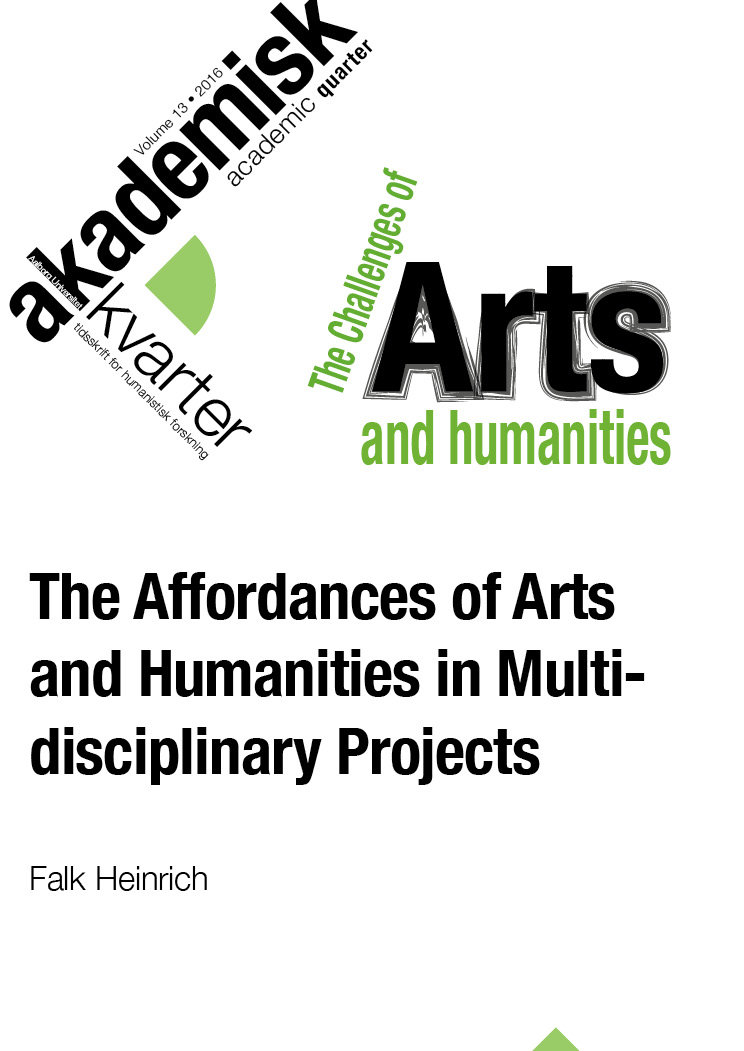Abstract | Abstract
The theme of this article is the role of aesthetics in providing one affordance of the arts and humanities in multidisciplinary research projects. The premise is that sense and sensemaking processes (as described by Weick (1995) and Luhmann (1984)) are at the core of multidisciplinary projects. This article discusses the potential of fiction and fictionalisation in multidisciplinary sensemaking processes and does so on two levels: the procedural level of the research project, and the level of a project’s subject matter. On the process level, aesthetic contributions to sensemaking serve the multilayered and creative interaction between the meaning-producing participants. On the level of the subject field, aesthetic competences generate spaces of potentiality by means of observational participation that restrains applications of existing concepts and creates intermediary spaces of non-sense. These spaces are inevitable for the emergence of novel solutions to complex social challenges. The article illustrates its assertions through discussion of a research project.
